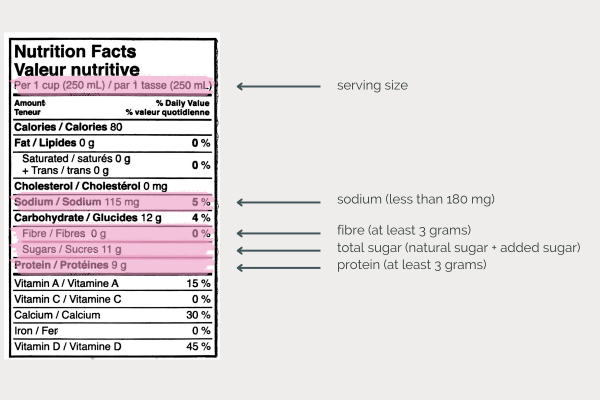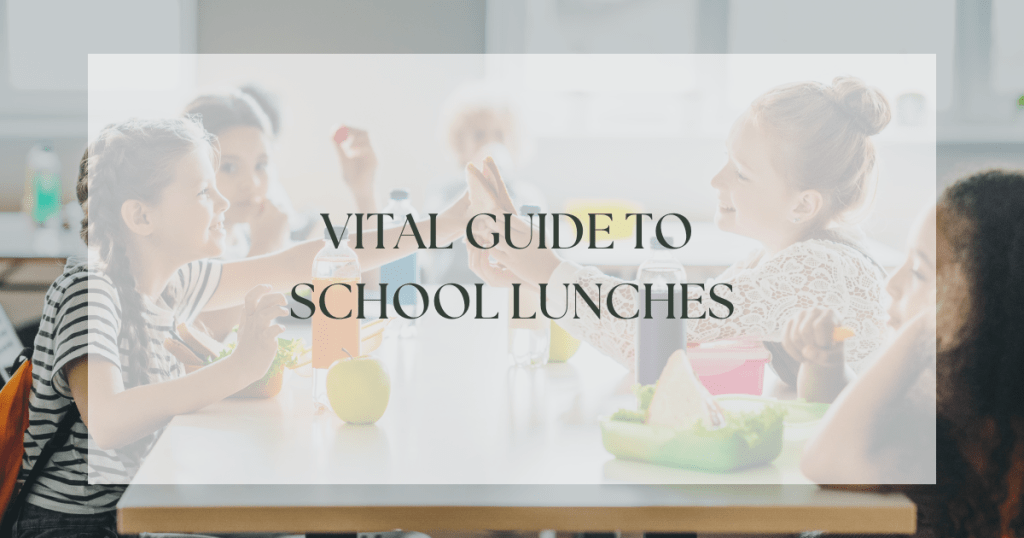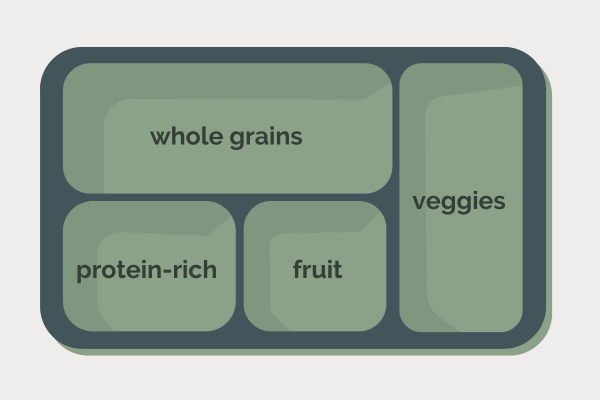As the new school year approaches, we know you have a lot on your plate. From organizing schedules to ensuring your child has everything they need, life can get a bit hectic. There’s one thing we can make easier for you: packing school lunches. Welcome to our guide on creating delicious, wholesome, and kid-approved school lunches.
- The foods we pack will be the source of fuel for our kids to learn and play throughout the school day.
- School lunches and snacks provide essential vitamins and minerals that our kids need to grow and develop.
When planning what to pack, think of the lunch box as having 4 parts to fill:
- One for protein-rich foods;
- One for energy-rich foods/whole grains;
- One for vegetables;
- And one for fruit.
Lunchbox ideas:
Protein-rich food ideas:
- leftover, cut-up, ground, or sliced meat, chicken, turkey, fish
- hardboiled egg
- beans, lentils
- seeds/seed butter (ie. WOW butter, sunflower seed butter)
- milk
- yogurt
- homemade protein balls (recipe provided)
- cheese slices, cottage cheese, cheese string
- tofu/tempeh
- roasted chickpeas (recipe provided)
- hummus
Energy-rich/whole grain ideas:
- bread, pita, tortilla, naan, Bannock
- pasta
- crackers
- energy balls made with oats (recipe provided)
- homemade muffins
- rice, quinoa, barley, couscous
Fruit ideas:
- berries (blueberries, raspberries, strawberries, blackberries)
- apple, pear
- banana
- orange, clementine
- plum
- peach
- kiwi
- grapes
- melon (watermelon, honeydew, cantaloup)
- fruit sauce (apple sauce)
- pineapple
Veggie ideas:
- carrot sticks
- cucumber
- snap peas
- radishes
- peppers
- celery
- leftover cooked veggies
- salad greens
- tomatoes
- veggie soup
- veggie sauce (tomato sauce)
Something just because:
- homemade cookie
- a few gummies
- something special that your kiddo enjoys!
What to pack for kids to drink:
- Ideally, pack a reusable water bottle that can be re-filled throughout the day.
- Milk is another great option. When offering milk, consider that 2 cups should be the maximum amount of milk your child consumes in a day.
- Offer juice in moderation. 1 cup of juice should be the maximum offered over a whole day of eating.
- Be cautious with sports drinks/electrolyte drinks/energy drinks, even if marketed to kids. Many of these drinks contain very high levels of micronutrients that can be harmful/toxic when consumed in excess. Some also contain high levels of added sugar and/or caffeine.
How to choose healthy packaged snacks:
- It can be helpful to start by considering how these snacks will fit into a whole day of eating.
- Ask yourself where they will fit:
- protein-rich foods
- energy-rich/whole grain foods
- vegetables
- fruit
- just because (other)
- The “ideal” packaged snack would meet the following list of criteria:
- a simple ingredient list
- little added sugar (sugars from fruit and/or milk are natural sugars and don’t count as “added sugar”)
- less than 6 grams of total sugar per serving
- less than 180 mg of sodium per serving
- at least 3 grams of protein per serving
- at least 3 grams of fibre per serving

- If the snack is low in protein, consider packing with a protein-rich food option.
- If the snack is low in fibre, consider packing with a serving of fruit and/or veggies.
- If the snack is higher in added sugar and/or total sugar, consider tweaking other foods in the packed lunch to have less.
Packaged snack ideas:
- hummus
- Greek yogurt cups
- cheese strings
- whole-grain crackers
- bean or lentil crackers
- kale chips
- roasted chickpeas
- seeds (pumpkin seeds, sunflower seeds)
- lower sugar granola bars
- unsweetened fruit and/or vegetable sauces/pouches
- trail mix
- unsweetened raisins
Planning school lunches:
- Planning school lunches ahead of time can help save time and money.
- Ideas and tips for planning:
- On the weekend, plan school lunches with your kids for the week ahead. Get your kids involved in the planning process.
- Stock up on healthy on-the-go snacks that you can add to their main meal. Think about what you will be making for dinner during the week and incorporate leftovers where you can.
- Involve your kids in packing lunches and get feedback:
- Allowing your kids to give feedback and involving them in the planning and packing process can help decrease the amount of food that comes home uneaten and get your kids to try new foods.
- If food is coming home unfinished/untouched, try asking your kids about when they eat each food item and why they avoid others. Some common reasons foods go uneaten:
- Some kids don’t have enough time to eat
- Some kids eat their lunch during snack time
- Some kids have trouble opening the packaging of a lunch or snack item
- Some kids find food either too warm or too cold by the time they eat it
Packing tips:
- pack school lunches in a washable and insulated box or bag to keep containers cold and all together in one place
- use leak-proof containers/compartments to store different foods
- pack a set of reusable cutlery that you don’t mind losing
- if you have time, pack the cold components of the lunch the night before so that they are already cold for the morning
- use 2 ice packs, one on the bottom of the lunch box/bag, and one on top
- plan to pack warm foods in the morning. When packing warm food, pour boiling water into the thermos and let sit for a few minutes before dumping and adding the warmed food items – this will help the thermos hold it’s heat until lunch time
- practice opening the different components of the lunch box at home with your kids before sending them to school. Review with your child what to do with the different types of packaging once they are done.
With our guide in hand, you’re ready to conquer school lunch preparation like a pro. By focusing on whole, nutrient-rich foods, making smart choices with packaged snacks, and involving your child in the process, you can ensure that their lunchbox is not just nutritious but also a delightful part of their day. Remember, school lunches are more than just food; they’re an essential part of your child’s daily adventure. For even more lunchbox inspiration, be sure to check out our other posts with delicious lunchbox recipes! Happy packing!



